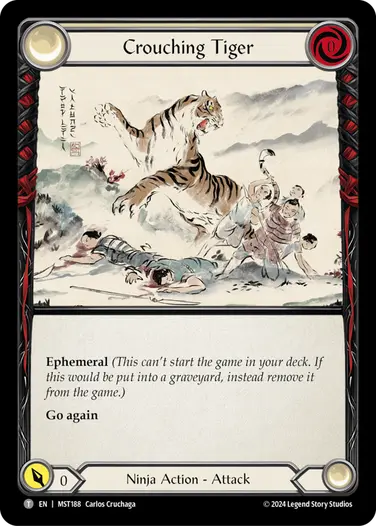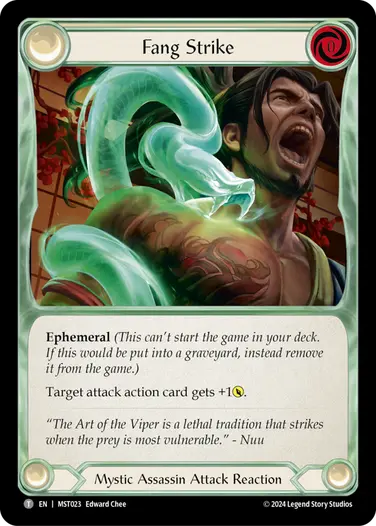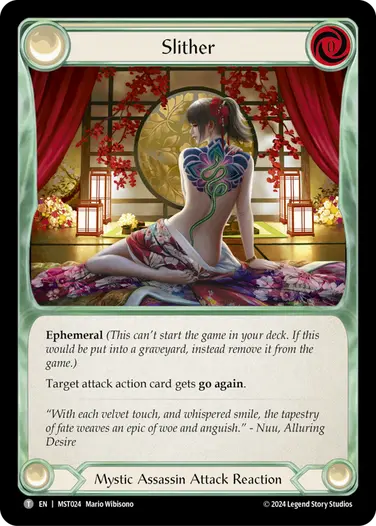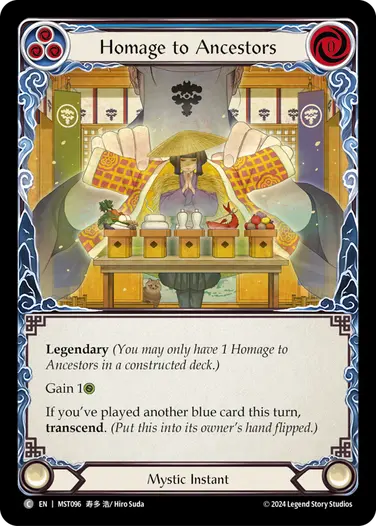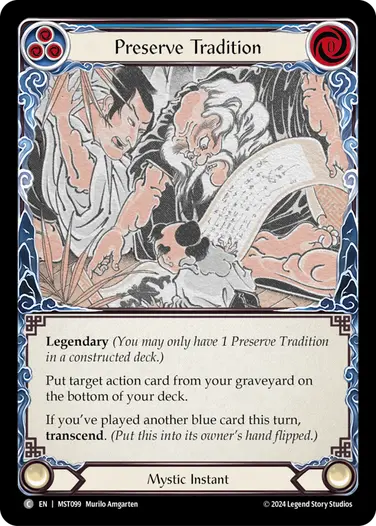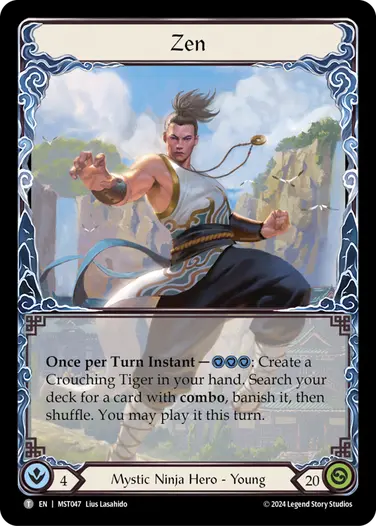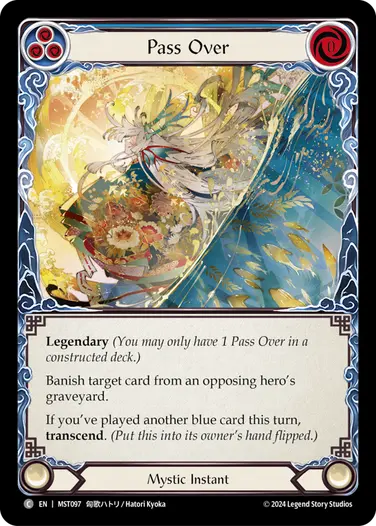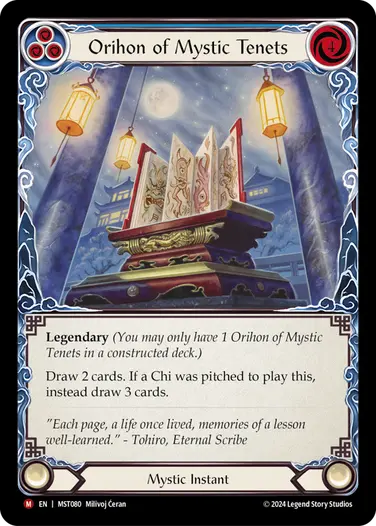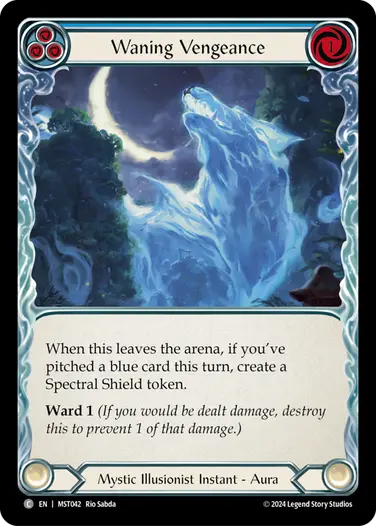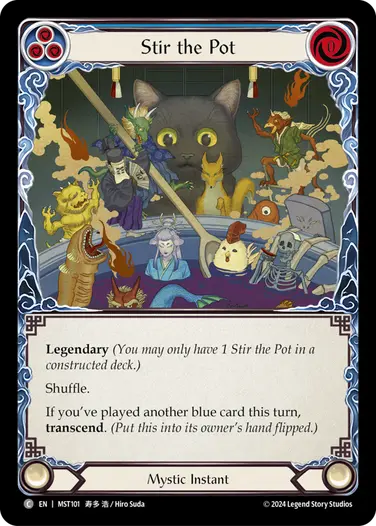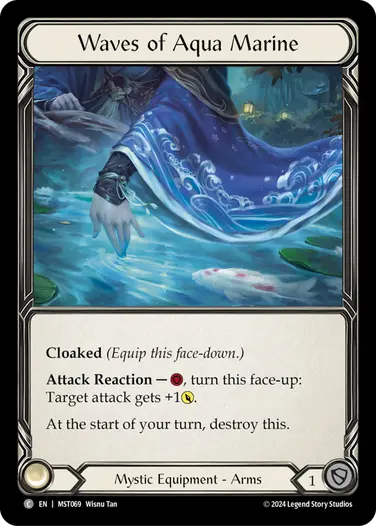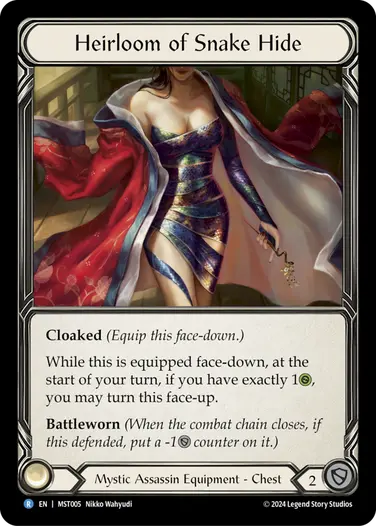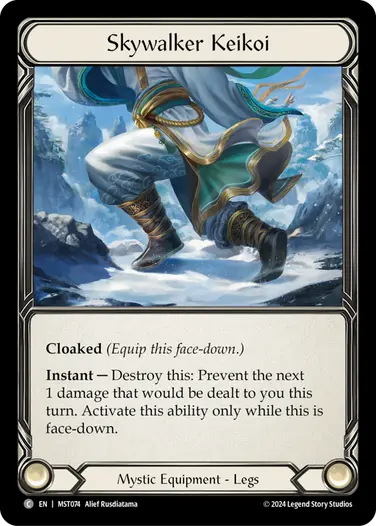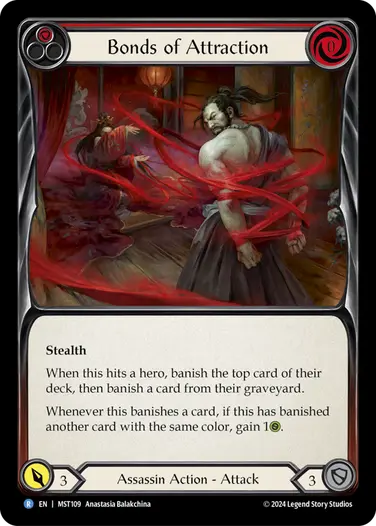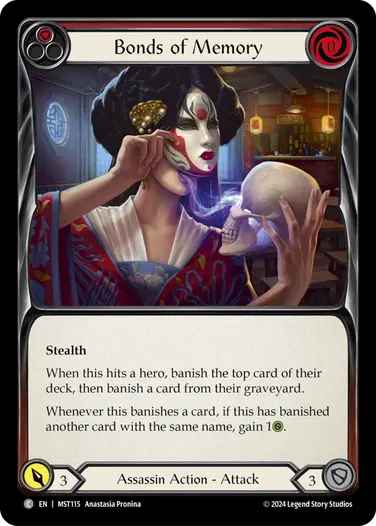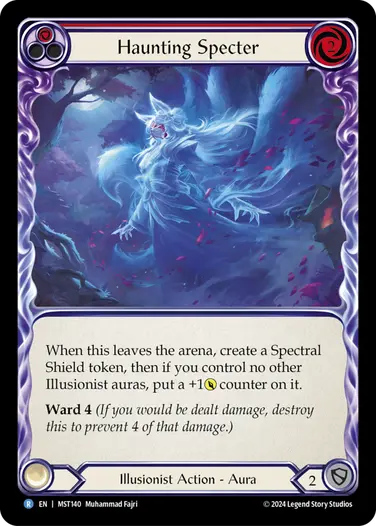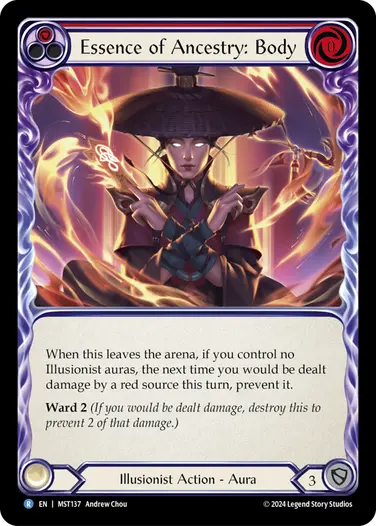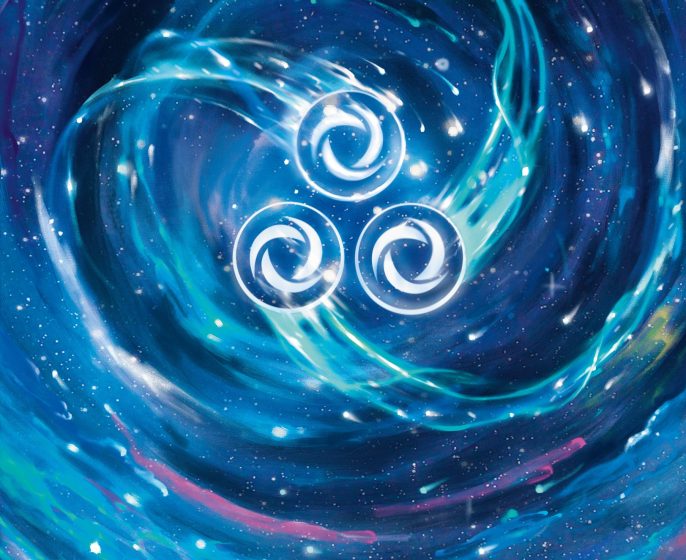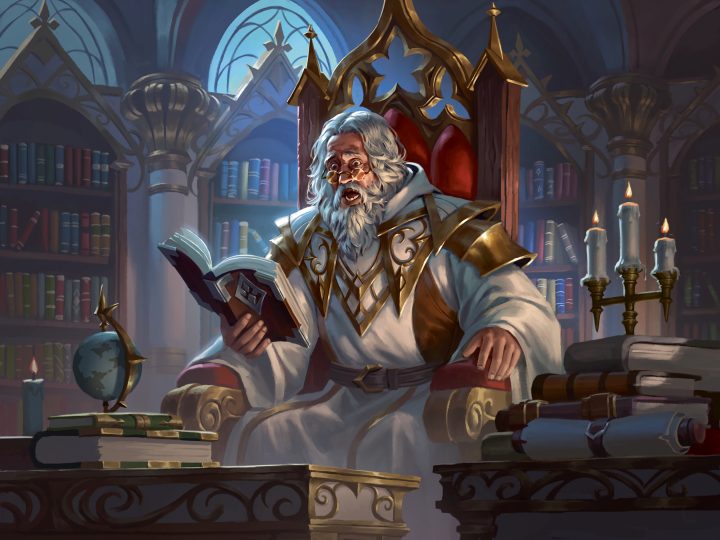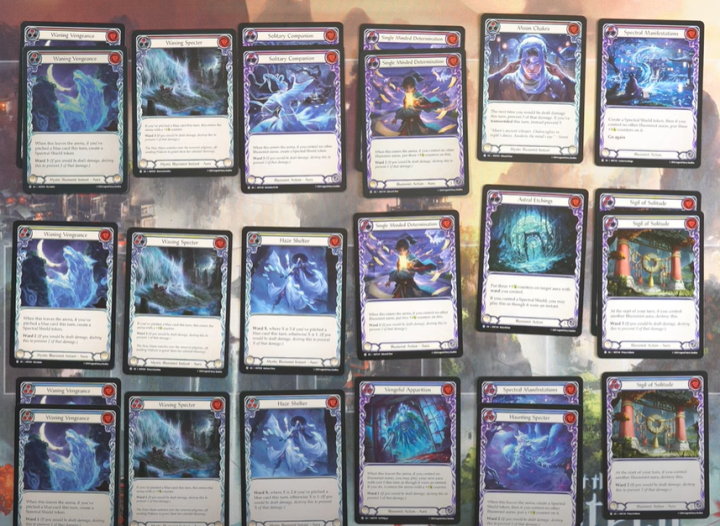The path ahead is shrouded in mystery and a lone traveller can easily lose their way. Rules and Policy manager Joshua Scott is back to teach us about the more complex interactions in the newest set, Part the Mistveil, with a focus on limited!

What are the newest changes to Limited?
Your starting deck size in Part the Mistveil Sealed and Draft must be exactly 30 cards at the start of the game. No more, no less.
Before each game, we recommend that you go through the cards in your deck and:
- Remove any arena-cards (equipment, weapons, etc)
- Remove any cards with ephemeral
- Flip Inner Chi cards back to their front-face
- Count out exactly 30 cards before presenting your deck to your opponent
In addition to the deck-size changes, we’ve updated the keyword Legendary to mean:
- Legendary (You may only have 1 of these in a constructed deck.)
This means that if you get two or more of the same card with legendary in your Sealed or Draft card-pool, you can still use all of them in your deck. This change will also retroactively apply to previous limited sets, but will realistically only have a minor effect on the Monarch and Outsiders limited format.
Ephemeral – What is this and how does it work?
Ephemeral is a returning mechanic where cards with ephemeral are created throughout the game.
Cards with ephemeral can’t start the game in your deck, but once they’ve been created during a game, they can go anywhere. If an ephemeral card would go to the graveyard, that’s when it gets removed from the game.
Because ephemeral cards are just like your deck-cards, they need to be sleeved the same way. This is to ensure that they aren’t considered marked while they’re in a zone like your deck.
As a player, you’re responsible for ensuring that you have enough ephemeral cards to play your deck. Only in exceptional circumstances will a Judge give you proxies for ephemeral cards, such as at large limited events where there are not enough cards for every player, or when an unexpectedly large number of ephemeral cards are required to represent the game state.
Remember to remove ephemeral cards from your deck at the end of your games.
Transcend and Inner Chi – What are these and how do they work?
There is a new type of card called a transcend-card. Transcend-cards have an ability on the front-face that allows them to transcend and they have an Inner Chi card on the back-face.
When a card transcends from an effect, it gets flipped, turning it into an Inner Chi card, and then it goes into its owner’s hand. The card stays flipped as an Inner Chi for the rest of the game regardless of whether it is pitched, discarded, banished, etc.
An Inner Chi card is special. Inner Chi is a blue resource card with the Chi subtype. When it is pitched, it gives you {c}{c}{c} instead of {r}{r}{r} to spend on special activated abilities like your hero or equipment. {c} costs are always paid first (before {r} costs), and floating {c} is always used to pay for costs before you can pitch any other cards. Each {c} can be used to pay towards either a {c} cost or a {r} cost, which means you can use Inner Chi like any other blue card to pay for costs.
And of course, don’t forget to De-Chi!
What’s the difference between Inner Chi, Chi, and {c}?
Inner Chi is the name of the back-face for transcend-cards in Part the Mistveil. It is just a name and otherwise has no special meaning.
Chi is the subtype of this back-face. Like many other subtypes (e.g. gem) it has no functional meaning, but many other cards refer to having pitched a Chi this turn, or to play a card – when they do, they’re referring to a card with this subtype.
{c} (chi points) is a new type of asset in addition to {r} (resource points) and action points. It can be obtained by pitching an Inner Chi card when paying for costs. {c} costs are always paid first (before {r} costs), and floating {c} is always used to pay for costs before you can pitch any other cards. Each {c} can be used to pay towards either a {c} cost or a {r} cost.
If I overpitch with an Inner Chi card, can I use the floating {c} for cards that care about pitching Chi?
You can use the floating {c} to pay for costs, but it does not count as pitching a Chi to play the card/activate the ability.
In short, you must actively pitch a card with the Chi subtype when you are playing the card and paying its costs. {c} (like {r}) doesn’t remember where it came from, and these types of effects only care about the subtype Chi on the cards you are actively pitching to play it.
What is the color of a card/attack?
The color of a card is derived from its pitch value. For example, cards that pitch for 1 are red, pitch for 2 are yellow, and pitch for 3 are blue. Cards that don’t pitch for any amount do not have a color.
Most weapon attacks do not have a color because the weapon itself does not have a color, However, when a card with a color attacks a player, the attack is considered to be the color of the card. For example, if you turn a blue aura into a weapon and use it to attack, the attack is considered to be blue.
Can I play two instants and transcend them both?
Yes, with a few exceptions.
The common transcend-cards are instants with abilities that check when they resolve if you’ve played another blue card that turn. This means you can play a transcend-card, then before it resolves immediately play another transcend-card, and then when they resolve they will both see that you’ve played another blue card and will both transcend.
Tyler plays Stir the Pot (layer 1). Before Tyler passes priority, Tyler plays Homage to Ancestors (layer 2). Both players pass priority and layer 2 resolves. Homage to Ancestors sees that Tyler has played another blue card this turn (Stir the Pot on layer 1), so it transcends into Tyler’s hand. Both players pass priority again and layer 1 resolves. Stir the Pot sees that Tyler has played another blue card this turn (Homage to Ancestors) and transcends into Tyler’s hand. Tyler played 2 transcend-cards and ended up with 2 Inner Chi in their hand.
The exceptions are the Sacred Art cards. These cards have modal abilities, which check if you’ve played a blue card this turn when they are played, NOT when they resolve. You can still play this in response to another blue card, but in limited (when you might have 2 or more of these) you can’t play two sacred arts cards in response to each other and have both get 3 modes.
Tyler plays Stir the Pot (layer 1). Before Tyler passes priority, Tyler plays Sacred Art: Jade Tiger Domain (layer 2). Because Tyler played another blue card this turn (Stir the Pot), they may choose all three modes which include transcending.
Tyler is playing a limited game. Tyler plays Sacred Art: Jade Tiger Domain (layer 1). Because Tyler has not played another blue card this turn, they may only choose 1 of the 3 modes. Before Tyler passes priority, Tyler plays another Sacred Art: Jade Tiger Domain (layer 2). Because Tyler played another blue card this turn (the first Sacred Art: Jade Tiger Domain on layer 1), they may choose all three modes which include transcending.
Finally, it’s important to remember that activating the ability of a blue card does not count as playing a blue card. Playing a card means putting the physical card onto the stack and paying it’s associated costs (e.g. the cost in the top-right of a card).
Cloaked – What is it and how does it work?
A new static ability called cloaked causes you to equip the card face-down rather than face-up. Equipping face-down is mandatory for cloaked equipment.
You can look at your face-down equipment, but your opponent can not. You can only turn a face-down equipment face-up if an ability or effect allows you to. If the cost of an ability is turning a card face-up, it can only be paid if the card is face-down. This means you can’t activate many of these abilities more than once.
While an equipment is face-down, it cannot be used to defend and its abilities are not functional. This means effects like ward will not prevent damage, and triggered abilities will not trigger until the equipment is turned face-up. There are a few exceptions; like abilities that have “turn this face-up” as a cost, “while this is equipped face-down”, or “activate this ability only while this is face-down”.
While the opponent cannot look at your face-down equipment, they do have the right to know what zone it is equipped to. Be careful with face-down cards in your equipment zones, especially in limited games where you might not have all 4 pieces. If you mislead an opponent by diverging from the standard layout, putting the cloaked equipment in the wrong zone, or turning an equipment face-down when it should be in the graveyard, you could be severely penalized in your games.
Finally, at the end of your game, if the opponent or a tournament official asks you to show your remaining face-down cloaked equipment, you MUST do so. This is so they can confirm that you were playing a fair game the whole time and not misleading them.
Do I get to see the first banished card before I choose the second for Bonds of Attraction/Memory?
Yes. The trigger first asks you to banish the top card of the hero’s deck. Once that action has been completed, you banish a card from their graveyard – its at this point you can choose a card from their graveyard to banish. This allows you to choose a similar card to help meet the condition for the other triggered effect.
For clarification, Bonds of Attraction/Memory will not trigger on the first card it banishes, but it will trigger on any subsequent card it banishes that meets the condition of having the same color/name as another card banished by Bonds.
Tyler is playing as Nuu and attacks Nic with Bonds of Attraction. Nic defends with a blue action card. The attack hits and there are two triggers on the stack: Nuu-trigger (layer 1) and bonds-trigger (layer 2). The bonds-trigger (layer 2) resolves, Tyler banishes a blue card off the top of Nic’s deck, and then Tyler chooses a blue card in Nic’s graveyard and banishes that. Bonds of Attraction triggers with its second ability (layer 2) which resolves and Tyler gains 1{h}. The Nuu-trigger (layer 1) resolves and Tyler banishes the defending blue action card, Bonds of Attraction triggers with its second ability (layer 1) which resolves and Tyler gains another 1{h}.
In summary, Tyler’s Bonds of Attraction banishes three cards, two of which had the same color as another card banished this way, and gained 2{h}.
When does my aura check if I control other auras?
For aura cards in Part the Mistveil, it checks when the triggered ability resolves. Most triggered abilities in Flesh and Blood are structured like this:
- When [trigger-condition], if [if-condition], do [effect].
When the trigger-condition is met (and ONLY the trigger-condition), a layer is created on the stack. When both players pass priority, the layer resolves, the if-condition (and ONLY the if-condition) is checked, and if the condition is met, the effect happens.
Tyler controls 2 Haunting Specters. Nic tries to deal damage to Tyler and both Haunting Specters are destroyed by their ward ability. Because the Haunting Specters were in the arena as permanents and then left the arena when they were destroyed, their effect triggers and two triggered-layers are put on the stack. The first triggered layer resolves, Tyler creates a Spectral Shield, and the if-condition is checked – Tyler controls no other auras than the Spectral Shield they just created, so they put a +1{p} on it. The Second triggered layer resolves, Tyler creates a Spectral Shield, and the if-condition is checked – Tyler DOES control another aura now, so they do NOT put a +1{p} counter on the created Spectral Shield.
To reiterate, there is no “intervening-if” in Flesh and Blood. The trigger-condition is checked once when the effect triggers, and the if-condition is checked once when the layer resolves – they are not checked at any other time. There are exceptions to this model: state-based trigger conditions are checked on the resolution of the layer (e.g. phantasm), but other examples are few and far between.
